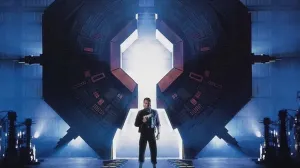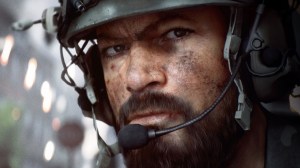DC’s new line of Young Adult stories takes some of its most iconic characters and gives them a modern and relatable spin, and nowhere is that as apparent as in Teen Titans: Raven. The newest installment in the line comes from writer Kami Garcia and artist Gabriel Picolo, and ComicBook.com had the chance to chat with Garcia all about how this book came to be and what sets the book apart from other Raven stories.
Videos by ComicBook.com
It turns out Garcia is a huge fan of DC’s characters, though she didn’t get the perfect character fit right off the bat.
“I just said, are there any characters, in particular, you are dying to have someone take on? First, they said Supergirl, and they didn’t know me yet and I was like, I don’t think I’m really the right person for Supergirl,” Garcia said. “I’m a little too dark for that. I’m not really sure what I would do with her unless you wanted me to make her bad. They laughed because they suggested that, they think it’s funny.”

Luckily the possibility of another group of characters came up soon after. “They then said Teen Titans. I said, oh I love Teen Titans. I think it was very broad,” Garcia said. “They said, ‘You can pitch more than one character.’ I think they meant in general. I took that to mean I can pitch whatever Titans I wanted.” She eventually pitched a more than a few characters, so much so that Dan DiDio would refer to it as the Table of Contents from that point on.
Eventually though she picked her Titans to spotlight, including Raven and Beast Boy. For Garcia, it was important to avoid one type of pitfall that has befallen other revisions of classic characters, and it’s something she had previously discussed with her friend and X-Files writer Jonathan Maberry during their time working on the X-Files Origins novels.
“One of the things that I remember really vividly, Jonathan and I talking about, was as fans we didn’t want to… because at that time we didn’t know they were going to be canon, so we had a little bit of room to play,” Garcia said. “We both were like, we don’t want to take characters we love and recreate them so they’re unrecognizable. As a fan, there’s nothing fun about that.”
“My approach to this was even more severe,” Garcia said. “Their mandate for the line was, “What we would like you to do is instead of writing about superheroes or teenagers, we’d like you to write about teenagers, who happen to be superheroes or have powers, and what would that be like as a teen.” The teen side was more emphasized. It’s out of continuity, do whatever you want. As a fan, to me, do whatever you want doesn’t mean destroy the character. The first thing I looked at was dealing with Trigon, the jewel on her forehead. How do I choose these elements and ground them or maintain them and reframe them without throwing the baby out with the bath water.”

Garcia also wanted to make sure regardless of where you get books you could start with any one of them as opposed to being stuck because you couldn’t start at the beginning, which especially affects those who go to their local libraries.
“One thing I also learned from writing the Beautiful Creatures series is that it’s popular with lots of different types of kids,” Garcia said. “As someone who taught underprivileged kids, one thing I hear a lot that bothers me is the kids will say, ‘Well, I can’t read this series because the first one’s checked out.’ Obviously, many series you have to read in order. One of the things I pitched very early on, because I know libraries’ funding are being cut. I know a lot of kids who read comics, the only way they get them is at the library, and graphic novels. I said, I want to write the origin ones in a way that you could pick up any one of the books and read about that character and you don’t have to read them in order, no matter what. I know a library does not have the money to buy five copies of Raven.”
“If Beast Boy’s there they can check out Beast Boy, then read Raven after,” Garcia said. “Dan was like, ‘Can you do that?’ And I was like, yes, but it’s really hard. I said I want to design the series so they can read them in any order. That appealed to them a lot because they also are very heavily invested in these lines with the library market. Graphic novels are amazing.”

The book wouldn’t have been possible though without the gorgeous artwork of Gabriel Picolo, who brought a style all his own to the novel. “I really believe that the magic of this book is the marriage between my story and Gabriel not just bringing the story to life, but really creating characters that completely embodied what I was trying to hit with those characters.”
Finding an artist wasn’t easy, and even when they found Gabriel the process of getting him to join had challenges of its own.
“When we were looking for artists, they showed me all these amazing artists. I was like, these people are all awesome, but they’re not ready for this,” Garcia said. “This is, it’s like a you’ll know it when you see it. There has to be something super relatable about these characters. I had seen Gabriel’s work, when I followed him on Instagram and I said, I want this, like this. They were like, ‘Well, no one else does that. Only this kid does that.’ I was like, okay well, what do we do? I was not expecting them to say, ‘Well, we’ll talk to the kid.’ I say kid, it’s so obnoxious. Gabriel’s like … I’m 47 so I’m very protective of him because he could be my child, mostly because I’m so old.”
“We’re a team and he brings something huge to the table that I can’t do. He loves the script because he loves the characters being relatable. We just did a lot of brainstorming and then there were moments like he has a jacket that he draws for Raven, that he created that’s very cosplayed and very popular online. The more I invited him to just do things, and the more positive feedback he got as we went on, he got really comfortable.”

You can’t have Raven without her Soul Self, which was a bit challenging at first to tackle but presented a solution as the two worked on the project.
“The Soul Self was the hardest for me, for the explanation,” Garcia said. “I knew how I wanted to start presenting the Raven. How I would explain it was really tricky. Then weirdly, as I started writing the cemetery themes, I originally did not plan to have the raven show up in the cemetery, where Natalia is. When I thought of doing that, I thought, this might be a way to make it very clear to the reader that this is actually a physical thing. This is not a dream. That’s what I was worried about, is this going to look like she’s just imagining this the whole time.”
“Again, I have to say I always refer to this as our book, not my book,” Garcia said. “Let’s be honest, who most people buy graphic novels for is the art. If the art isn’t amazing, I don’t necessarily want to read lines. I want to read the ones that have a great story and great art.”
Another important theme in Raven is the concept of family and the many forms it can take and does an amazing job of not falling into typical blended family troupes.
“I think I have several family members in my extended family, that are adopted,” Garcia said. “Also, I am part of a, my siblings and I, my parents divorced when I was young and both remarried when I was very young. My mom and my stepdad and my dad and my stepmother have been together since I was four. I have stepbrothers, I have a half sister and a half brother. None of us refer to each other that way. They’re my brothers and sisters. My stepmom refers to me as hers, even with my mom.”

“That’s one reason why I also wanted to show you that Raven was adopted,” Garcia said. “To her mom, Raven was like, ‘Whatever, I don’t need to care about it.’ To her, it was like, well you were already my mom. To her mom, she was like, “Well, we’re just making it official.” I wanted to show that there are people who foster a kid. Even if you adopt a kid later. Maybe you don’t get the child as a baby, you get the child later. I know people who were adopted later in life. Their parents don’t think of them any different than if they had given birth to them.”
“Now, I also didn’t want to glamorize foster care,” Garcia said. “Unfortunately, there’s a lot of negative foster care going on also. Not every foster family is horrible. Some foster families are wonderful and take care of the kids and love the kids like they’re their own. We just hear more about the horror stories. No one’s gonna cover the happy stories in the news. I wanted to also show that there are a lot of families, found families. My readers have always pointed out, that’s a theme in a lot of my work. I do feel like sometimes people who are part of a blended family or a foster family or an adopted family, there is a stigma and I wanted to show that there doesn’t need to be. A lot of times, they embrace Raven just like they would have if she were born to Vivian.”
Be on the lookout for more from our interview with Garcia, and you can check out our full review of Teen Titans: Raven right here. Teen Titans: Raven is available in stores June 26th.








